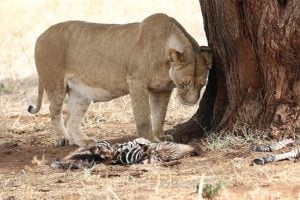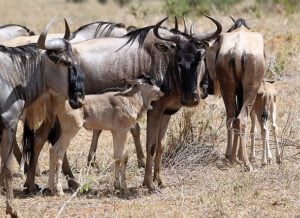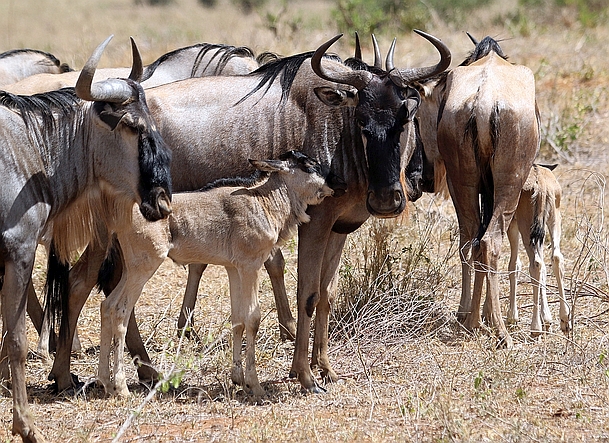In Summary: Drought has left wildebeests and zebras of the Tarangire Ecosystem in northern Tanzania without food or water on their calving grounds, disrupting their normal migration and forcing them to give birth near the Tarangire River.
Tanzania is experiencing a drought after the short rainy season failed to deliver much-needed rainfall during recent months. The landscape across the Tarangire Ecosystem of northern Tanzania is now unseasonably dry, and where the ground would normally be a carpet of green, grasses and herbs are now in short supply. Normally, at this time of year, the long-distance migratory wildlife like wildebeests and zebras would be on their calving grounds on the short-grass plains near Gelai and Simanjiro, far from the Tarangire River. However, the lack of water and food on the calving grounds has forced pregnant wildebeests and zebras to return early to Tarangire National Park to give birth, a disruption of their normal migratory behaviour with uncertain consequences.
The Tarangire Ecosystem is defined by the long-distance migration of wildebeests and zebras between their dry-season range along the Tarangire River in Tarangire National Park, and their wet-season calving grounds on the Northern Plains and Simanjiro Plains outside the park. The reason for the migration is that the greater nutritional content of the grasses on the calving grounds support lactation and calf growth, but the less nutritious grasses near the river do not. Wildlife migrations are an endangered phenomenon in the world and there are only three remaining wildebeest migrations in Africa. The Tarangire migration supports the Tarangire Ecosystem as an important source of wildlife tourism revenue for the country but the ecosystem is largely unprotected and the population of wildebeests has plummeted from 40,000 in the 1980s to only 7,000 today. Conservationists fear this disruption could exacerbate the Tarangire wildebeest’s already precarious situation, which is why Wild Nature Institute has prioritized protection of the Northern Plains migration route.
It remains to be seen whether the wildebeest calves now being born in Tarangire National Park will survive, given the poor forage quality there. If this year’s crop of wildebeest calves is lost due to the drought, the population will have a harder time recovering from its already depleted numbers. On the positive side, the unusual presence of so much easy prey in Tarangire National Park is likely helping the lions and other predators that live there. Lion numbers have been steadily declining in Tarangire due to illegal killing when they leave the safety of the park. Giraffes too should see unseasonably high calf survival as the lions and hyenas concentrate their predation on wildebeests and zebras. The current drought situation highlights the interconnectedness of all parts of a functioning ecosystem, and how a natural disruption can push endangered wildlife populations over the edge when they are already suffering from human-caused habitat loss and illegal killing.



